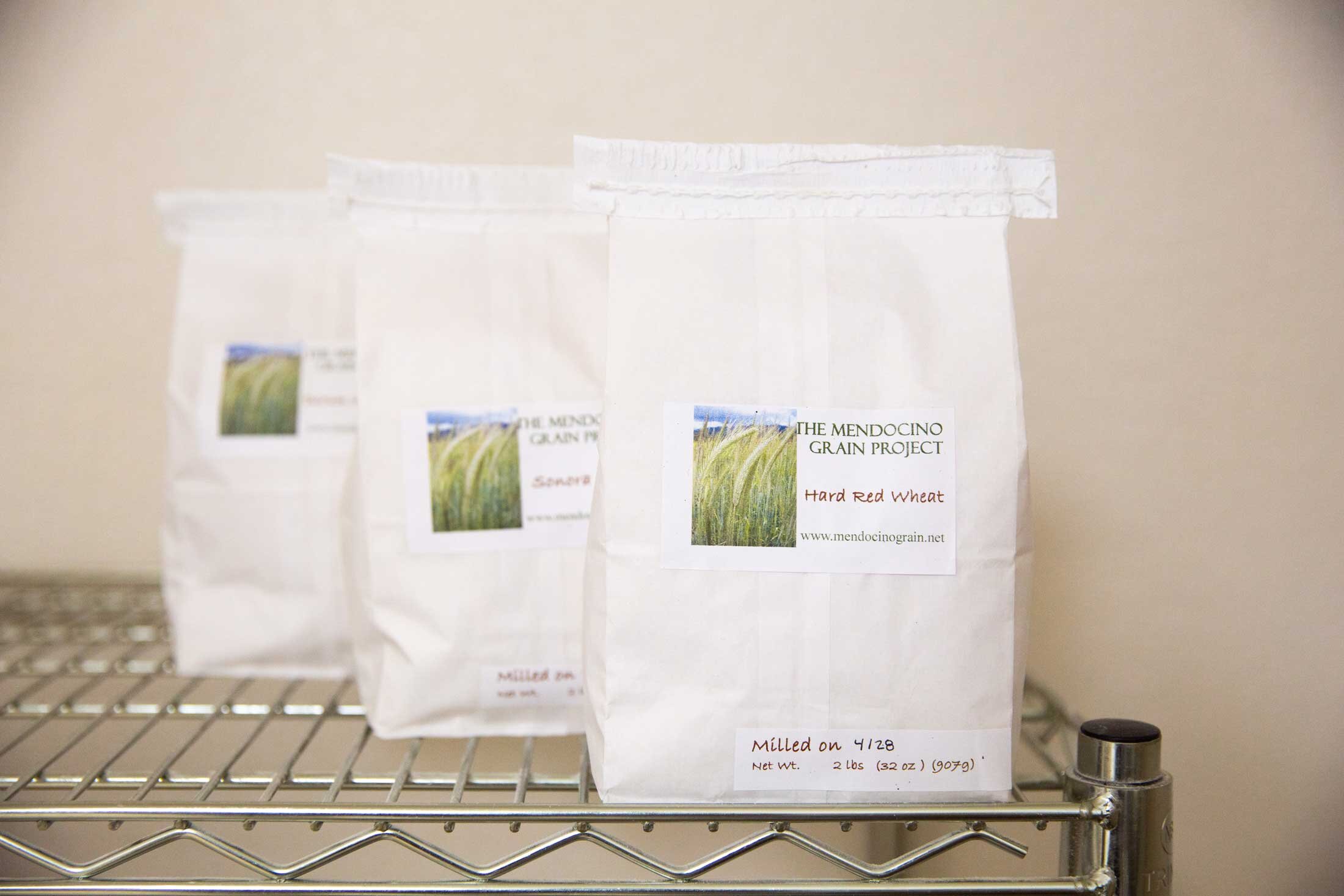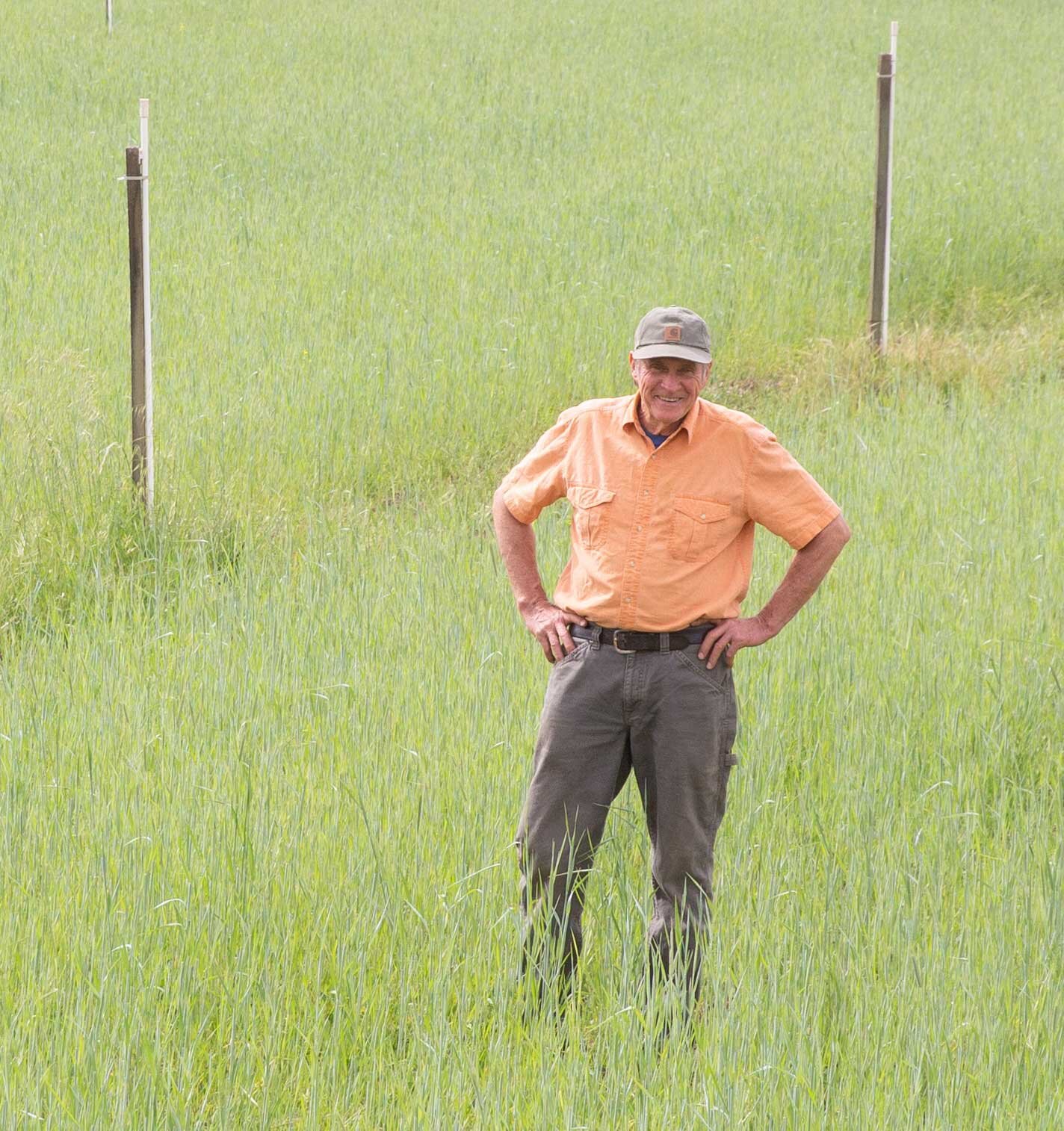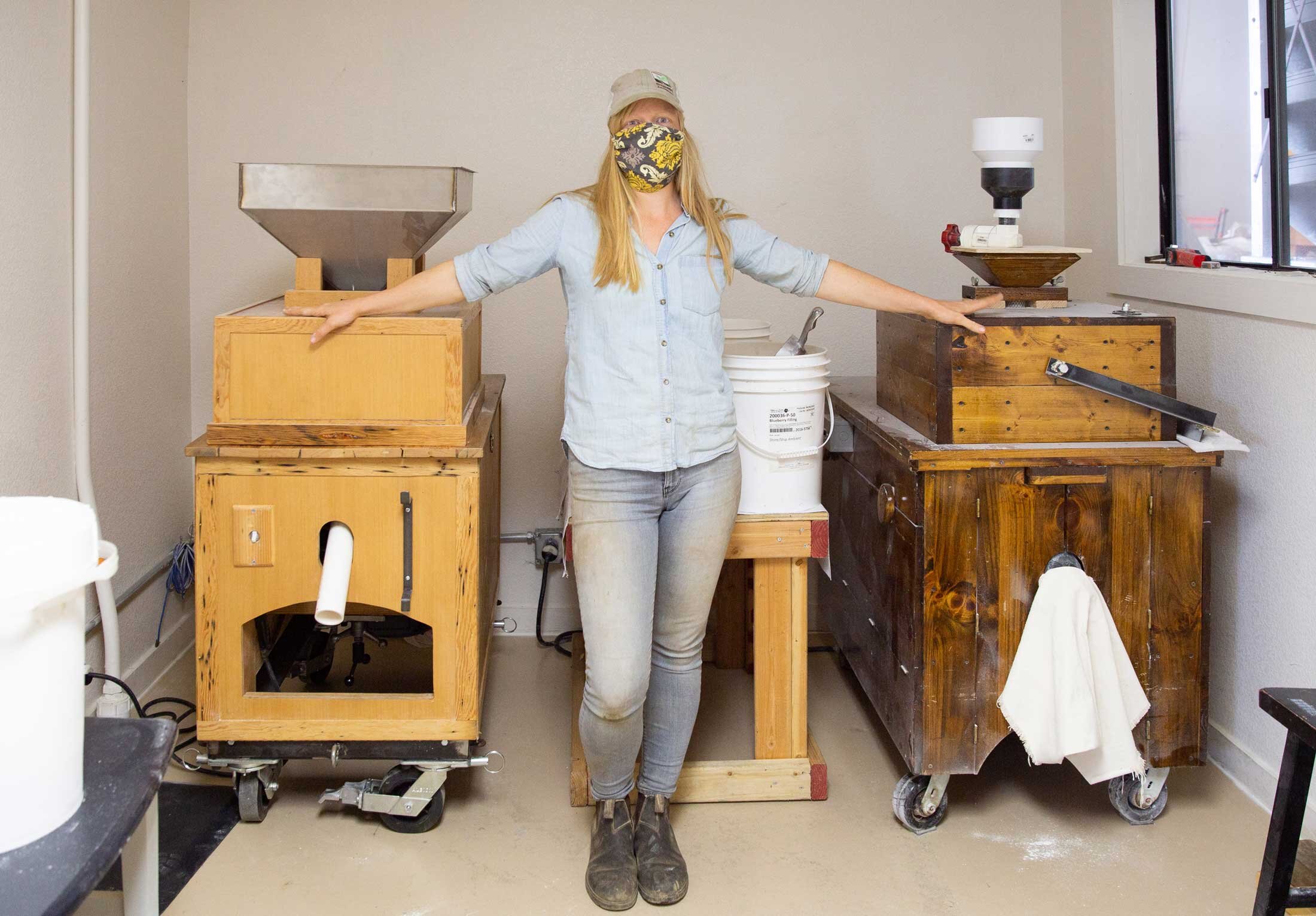The Mendocino Grain Project Changes Hands

by Rachel Britten
photos by Ree Slocum
In March of this year, with the onset of a global pandemic, Americans returned to the pastime of home baking in unprecedented throngs. As many witnessed empty shelves in the flour aisles of supermarkets both big and small, The Mendocino Grain Project’s sales grew more than ten-fold, and April doubled that. The company grows grains in Mendocino county like wheat and rye, which are then stone milled into whole grain flour, providing flavor, nutrition, and as it turns out, local food security.
In 2009 the project’s founder, Doug Mosel, set out with a vision to provide locally grown grain to Mendocino consumers. His vision was in part a response to an assessment of local food security by the Anderson Valley Foodshed group. They determined that, while Mendocino County was providing local sources of fresh fruit, produce, meat, and wine, there was a notable gap in our local food system—grains. Or in other words, high calorie, staple crops.
In different times, it might take more nuanced convincing to assert the importance of local production of these crops. Given the current reality, the precarious nature of how food gets to our supermarkets and, in turn, on our plates is a personal experience for many. Why has the Mendocino Grain Project been able to stock shelves when larger flour producers have not?
It is not just an issue of inventory. First, hyper-localized production means that local distribution is prioritized. In times when a company with a larger distribution network is dividing their limited product to outlets all over the U.S., our products are delivered straight to shelves in the county. Second, a David and Goliath phenomenon allows the relatively small scale project to respond quickly to major shifts in demand. When demand skyrocketed and inventory projections ran low, it took three phone calls to local farmers the project has worked with to restock the inventory and ensure supply through the next harvest.






Unfortunately, inventory is not the only limiting factor to getting flour to supermarket shelves. The whole grains need to be milled. The Mendocino Grain Project is only able to mill about 150 pounds a day before the millstones heat up too much to make high quality, nutritionally dense flour.
On Tuesday, April 28th, Rachel Britten, the new owner of the grain project, found herself on the side of Highway 101 putting a spare tire on a 4,000-pound custom-built trailer. Inside was a mobile flour mill on loan from Honore Mill, a non-profit project in Sonoma County that promotes the use of local grains. The local grain network, a mutually supportive relationship with Honore Farm & Mill, and the borrowed mill has allowed the Mendocino Grain Project to double their daily milling capacity, the final piece in responding to the surge in demand.
This experience has been a lesson in nimble response, the power of relationships in local food networks, and the actualized importance of keeping at least some of our staple food production in our backyards. It has also been a lesson in what is left to learn. While the above helped aid a rapid, scaled-up response to local need, the amount of available local grain is still relatively small.
For the Mendocino Grain Project, this is just the beginning. The company is on track to harvest 30,000 pounds of grain this year. Because the project has the capacity to harvest and clean grain for other farmers, the ultimate goal is to provide what is necessary so that other local farmers can join the effort to grow more staple crops in Mendocino County.
Products of the Mendocino Grain Project can be found through the MendoLake Food Hub, the Ukiah Natural Foods Co-op, and are available with a CSA membership
